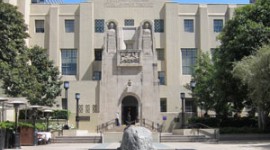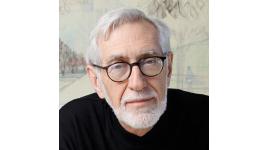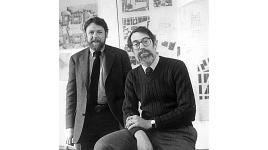Landscape Information
Established as La Plaza Abaja in 1866 and known as Central Park after 1890, this five-acre public square in Bunker Hill was renamed for General John Joseph Pershing in 1918. It was originally designed as a formal garden by architects Parkinson and Bergstrom in 1911, planted with tropical trees and shrubs and featuring balustrades and orthogonal walks leading to a central, three-tiered fountain. In 1951, the park was razed to build a subterranean, 1,800-car parking garage and replaced with an elevated lawn with twin reflecting pools. Isolated from the city by automobiles ramps, the park was again redesigned by Mexican architect Ricardo Legorreta and landscape architect Laurie Olin of Hanna/Olin between 1992 and 1994.
The rectangular site is divided into two paved plazas linked by an east-west walkway and a central crossing dominated by a low, geometric building painted yellow. The Postmodernist design employs bright colors, whimsical details and public art to link the region’s Hispanic and Anglo heritages. Olin and Legorreta incorporated references to California’s cultural history: a small orange grove alludes to the citrus industry; a conceptual earthquake fault line, rendered in different colored granites by artist Barbara McCarren, interrupts the pavement and suggests seismic activity; and embossed terrazzo stars allude to Hollywood’s Walk of Fame. The park’s focal point is a 120-foot-high, purple campanile and an elevated aqueduct that carries water to a pebble-paved circular pool on the southern plaza. The park also contains an expansive open lawn crossed by concrete paths, a concert stage and an ice rink.















